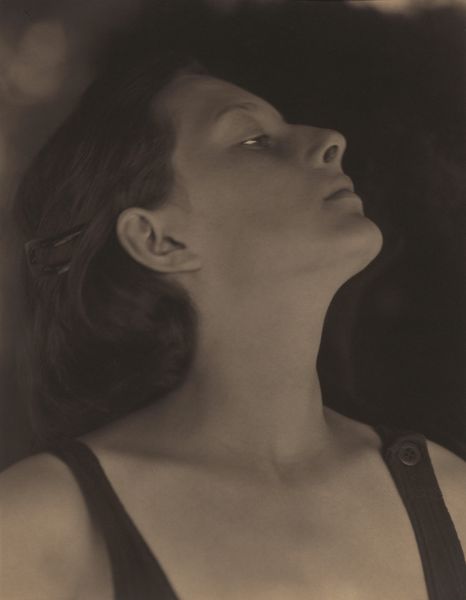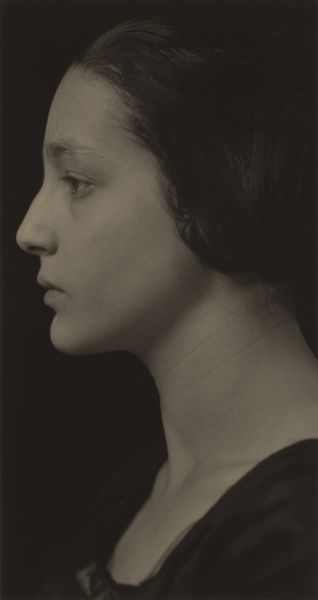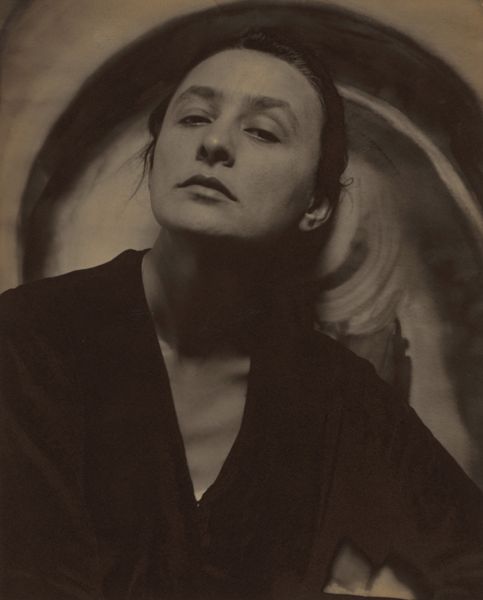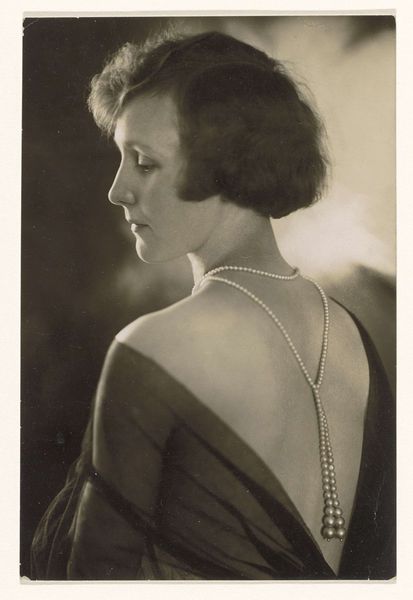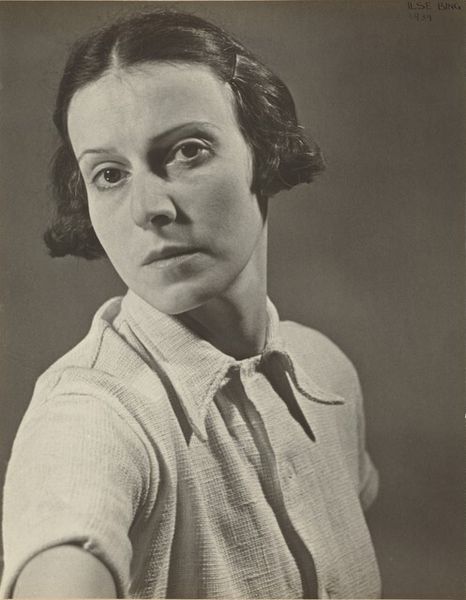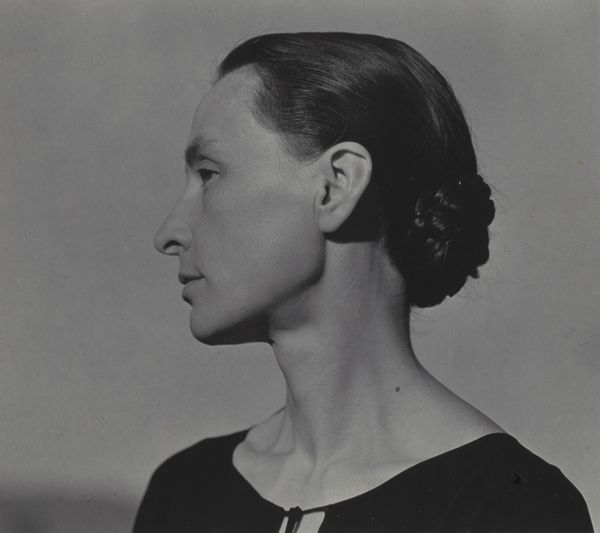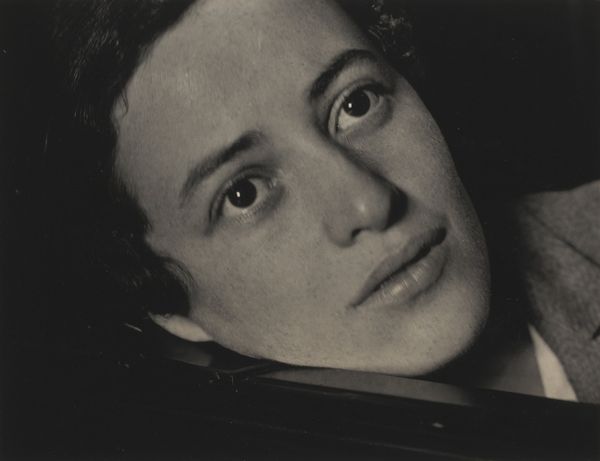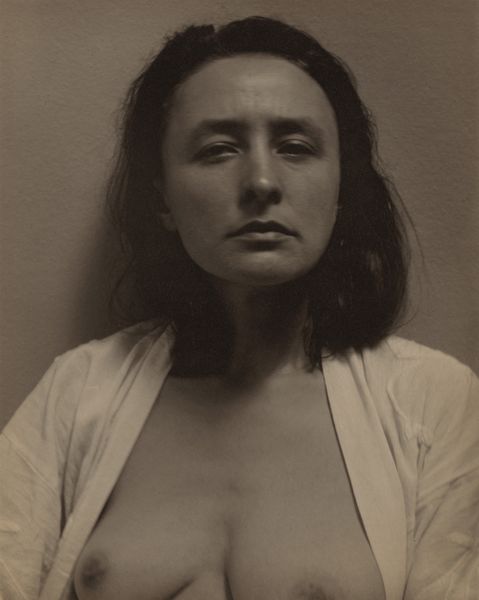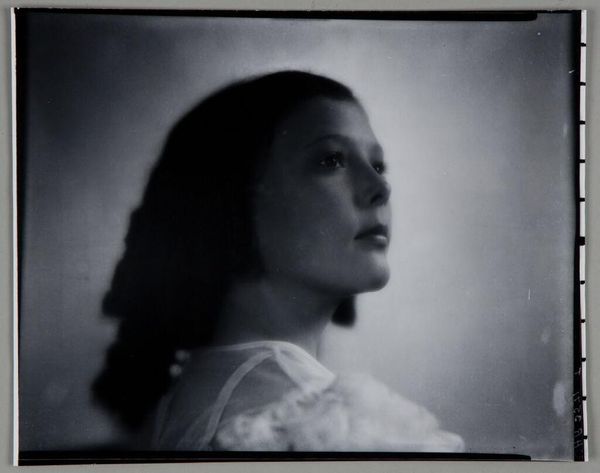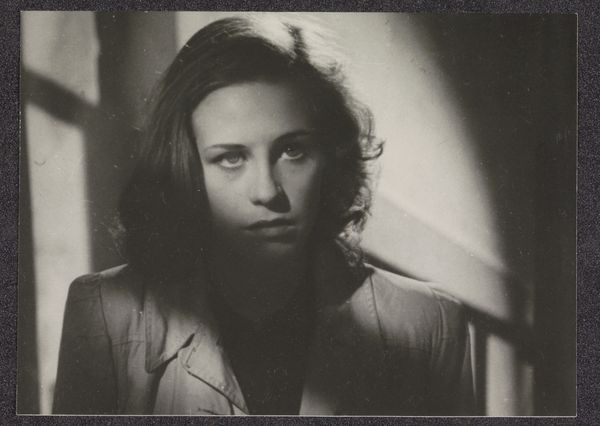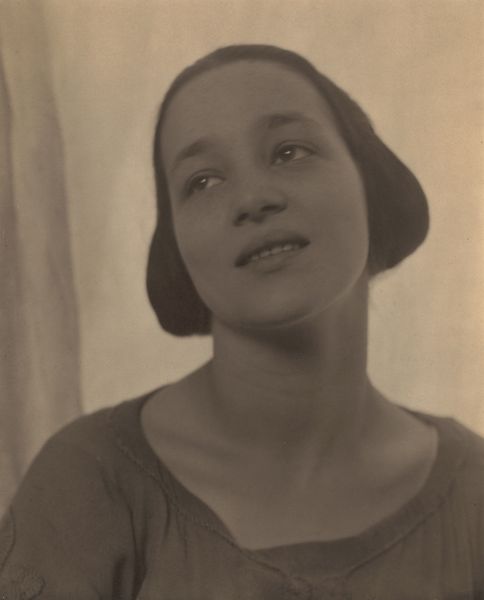
Dimensions: sheet (trimmed to image): 11 × 8.7 cm (4 5/16 × 3 7/16 in.) mount: 34.3 × 27.3 cm (13 1/2 × 10 3/4 in.)
Copyright: National Gallery of Art: CC0 1.0
Editor: So, this is Alfred Stieglitz's photograph, "Margaret Treadwell," taken in 1921. It's a striking portrait. The close-up and the model's slightly tilted head create an almost confrontational mood. How do you interpret this work in light of the art and photography of the time? Curator: The historical context here is key. Stieglitz, a champion of modernism, sought to elevate photography to the level of fine art. The early 20th century was a period of profound social change, particularly concerning the role of women. Stieglitz's photographs, including portraits like this, weren't just about capturing a likeness; they were about exploring identity and psychology. Notice the angle, as you mentioned, and the interplay of light and shadow. Does it seem posed to you or natural? Editor: I see both, actually. There's a naturalism in the soft focus and the almost casual pose, but the dramatic lighting and the composition also suggest a very deliberate artistic choice. Curator: Exactly! Stieglitz wasn’t simply documenting reality; he was constructing a specific image of modern womanhood. Consider his relationship with Georgia O'Keeffe; he championed her as an artist and captured her image repeatedly, constructing her public persona. How do you think Stieglitz uses Margaret Treadwell's gaze, or lack thereof, to communicate meaning about this young woman’s persona? Editor: Interesting! Her eyes are closed, which makes her unreadable. Is that a reflection on how women were perceived and often objectified in that era? A subject who is meant to be seen and not to speak? Curator: Potentially, and the image complicates it because her expression and gaze invites curiosity, urging you to engage with her individuality. Stieglitz challenged conventional notions of portraiture. This is photo-journalism meets art photography meets socio-cultural statement. Editor: It's fascinating to consider the photograph in that context! It shifts how I initially perceived the image. Curator: And hopefully encourages us to ask even more questions about how individuals are seen.
Comments
No comments
Be the first to comment and join the conversation on the ultimate creative platform.
